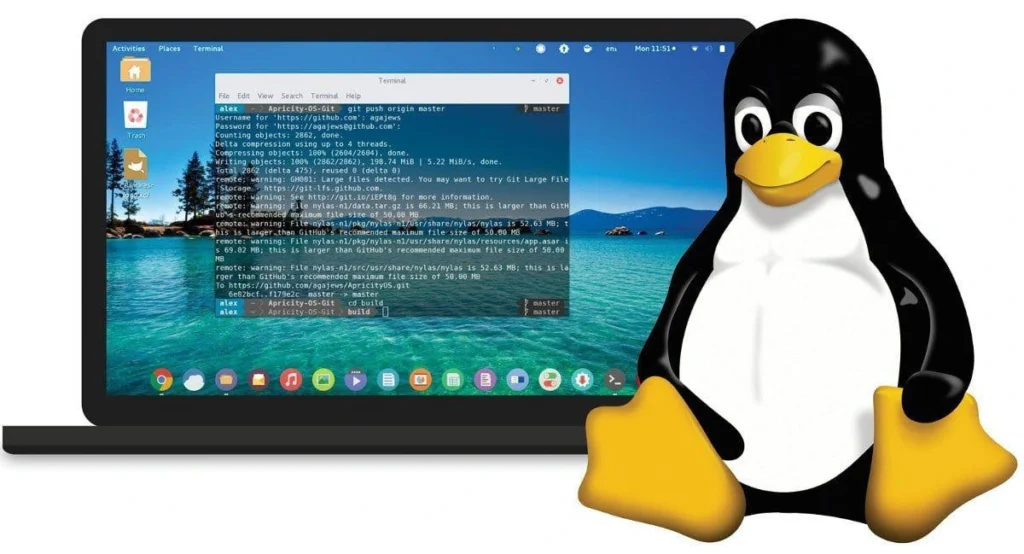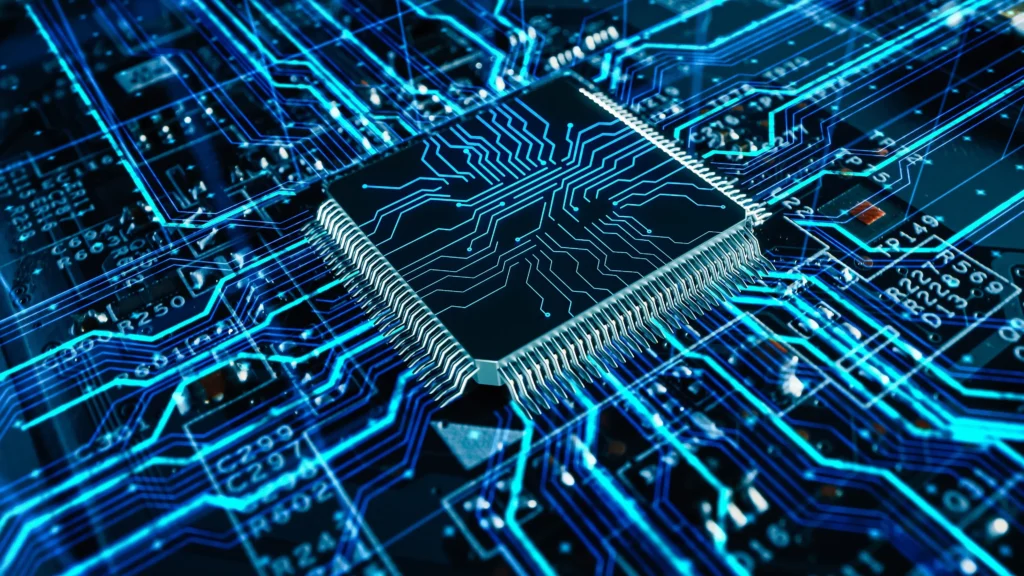The Intel Vision 2025 conference was held in Las Vegas. Although the venue wasn’t as great, the thoughts exchanged were great. Intel is among the largest technology firms, and it is now preparing for great things in the future. The corporation needs to lead once again in key sectors like chip and AI (artificial intelligence) tech. Intel is also striving to ensure Intel strategy is successful and correct past errors of Intel to create a bright future.
In this blog, we are going to share some key points presented by Intel at the Vision 2025 conference. We will give you a brief idea of what Intel is doing to dominate AI and chips. We’ll also discuss Linux. How Linux is inculcating AI. Let’s go in-depth into the Linux plan and Intel strategy and how it will benefit us in the future.
Lip-Bu Tan’s Leadership at Intel

Intel has a new CEO, Lip-Bu Tan. He is a smart leader with lots of experience in technology. Lip-Bu Tan was already part of Intel before, so he knows the company very well. Many people are excited because they think he can help Intel become strong again.
- Intel’s new CEO is Lip-Bu Tan. He was appointed on March 12, 2025. He has good experience in technology. Tan graduated with a Bachelor of Science in Physics from Nanyang Technological University in Singapore. He had pursued a Master of Science in nuclear engineering from the Massachusetts Institute of Technology. MBA from the University of San Francisco. He was also awarded the Robert N. Noyce Award in 2022. The Noyce Award is the Semiconductor Industry Association’s highest award.
- Lip-Bu Tan’s Experience: Tan had extensive experience in the technology industry before he became CEO at Intel. He is a founding managing partner of Walden Catalyst Ventures and chairman of Walden International. These experiences set him apart and pushed the company forward.
- Intel’s New Way: Tan laid out a plan for Intel to concentrate on developing new concepts. Intel strategy includes collaboration with other firms and AI technology development. It also includes expanding AI chips and Intel Foundry. Tan has a ten-year goal of yearly releases of AI chips.
Intel’s Big AI Plan
Intel strategy involves believing AI (artificial intelligence) is the future. AI can make computers think and decide like human beings. Investing in AI can benefit the company in the future; that’s why Intel wishes to advance their AI technology.
Intel’s “AI Everywhere” Plan
Intel’s strategies include the Intel strategy of “AI Everywhere”. It indicates that Intel wishes to imbue AI in all its technologies. The company wishes to apply their AI intel strategy everywhere in all its technologies to ease their user lives.
- AI-Optimised Hardware: Intel is designing new chips and computer components that are specialised in assisting AI in performing faster and better. They include:
- Gaudi 3: A chip used for deep learning, which is a type of AI.
- Falcon Shores: A fresh computer component used to facilitate AI with high-performance computing (HPC).
- Xeon Processors with AI: Intel is integrating AI capabilities into its Xeon chips so that companies can leverage AI with ease.
- Open Software Platforms: Intel is creating software tools that anyone can use. AI developers will be able to make AI quicker and better using these tools. Intel wishes for people to collaborate on making AI tremendous.
- Collaborating with Other Companies: Intel is collaborating with large companies such as Microsoft, Google, and Amazon. They can make AI everywhere, improve AI smartness and be more convenient for humans to use when they collaborate.
Chiplets: Intel’s Future Chips
Intel are also introducing significant changes to how they manufacture chips. Chips are usually produced in a single piece. However, Intel is now employing something known as chipsets.
What Are Chiplets?
Chiplets are small, specialised pieces that can be assembled to form a chip. It’s contrary to how chips were previously made in one large chip. Chiplets are an innovation, and they will enable Intel to produce improved chips at a faster and lower cost.
Why Chiplets Are Good:
- Faster Creation: Through the use of chipsets, Intel can produce new chips rapidly.
- Customisation: Chiplets can be combined and rearranged to make chips that are ideal for various tasks, such as the AI everywhere mission or gaming.
- More Affordable Production: Chiplets can save Intel money, as Intel is already experienced in creating chips.
Intel also has a special system in development known as UCIe. This makes it possible for chiplets from various companies to cooperate. With this, Intel is forcing the whole industry to use chiplets and accelerate new technology.
Intel’s Prioritizing Manufacturing
Intel strategy involves more control over producing its chips. Previously, Intel had lost some of its lead in chip-making. Intel is currently making efforts to reclaim that position under the leadership of Lip-Bu Tan.
Intel Foundry Services (IFS)
Intel strategy involves establishing a new service named Intel Foundry Services (IFS). IFS will enable Intel to produce chips not only for itself but also for other firms. This means that Intel can produce chips for firms that require assistance in developing their technology. IFS will be critical in producing chips used in AI.
By opening up IFS, Intel will enable more companies to produce the chips they require. This will establish Intel as an extremely significant company in the world of chip production.
Linux and Its Importance in AI
As Intel strategy is to work diligently to enhance AI and produce new chips, there is another extremely crucial aspect: Linux. Linux is an extraordinary type of computer operating system that assists a large number of computers to operate.
Although Linux is the last thing one would associate with “AI”, it happens to be one of the most significant components of AI technology.
What is Linux?

Linux is an operating system, the same as Windows or macOS. Linux assists computers in running programs and handling tasks. What is so unique about Linux is that it is open-source. This means that anyone can use it, modify it, and enhance it. Due to this, Linux is ideal for AI because programmers can modify it to do just what they require.
The Linux Foundation
The Linux Foundation is an organisation that assists in making Linux better. It assists companies and developers using Linux to develop new technology. Under Jim Zemlin’s leadership, The Linux Foundation is striving to ensure that Linux is robust enough to enable AI to grow.
How Linux Assists AI Growth
Linux is crucial for AI because it enables companies to develop powerful AI systems. Most large companies employ Linux for AI due to its flexibility and reliability.
- Linux is Stable: Linux makes AI programs execute smoothly. Because AI must execute without difficulty and with speed, Linux is the ideal option for programmers.
- Linux is Open: AI programmers are able to modify and enhance Linux to meet their requirements. This makes it easier for developers to create faster.
- Linux Supports Large Projects: AI requires massive computing power. Linux assists in keeping all the resources in check, ensuring that AI can operate on large computers and deal with large sets of data.
The Future of AI with Intel and Linux
Both Linux and Intel strategy are trying their best to improve AI. Intel is developing faster chips and new AI technology. Meanwhile, Linux is giving a solid foundation to developers to construct their AI systems. Both of them together are shaping the future of AI.
- Intel’s Chips: Intel’s new chips are developed to make AI run faster and better.
- Linux’s Versatility: Linux is being utilised by most companies to develop AI applications that function well and can be improved easily.
By leveraging Intel’s powerful chips and Linux’s open-source base, AI can expand more rapidly and be applied in more locations, thus leading to the success of Intel strategy. This will make industries such as healthcare, education, and transportation smarter and more efficient.
Conclusion
The Intel Strategy 2025 conference revealed to the world that the company is future-ready. With a new leader, Lip-Bu Tan, Intel is undergoing major transformations to be a leader in AI, chip technology, and manufacturing. By prioritising AI, Intel aims to design intelligent solutions that will assist businesses and individuals in numerous ways.
Linux and Intel strategy together will build a future where AI is applied everywhere. With Intel’s strong leadership and Linux’s support, the coming years will be thrilling as we witness AI transforming the world.



